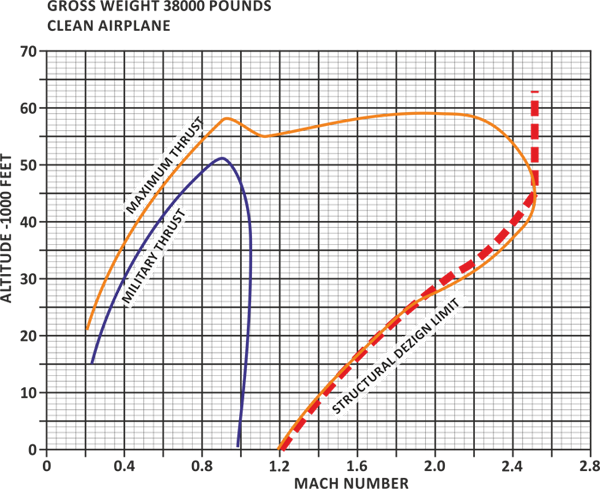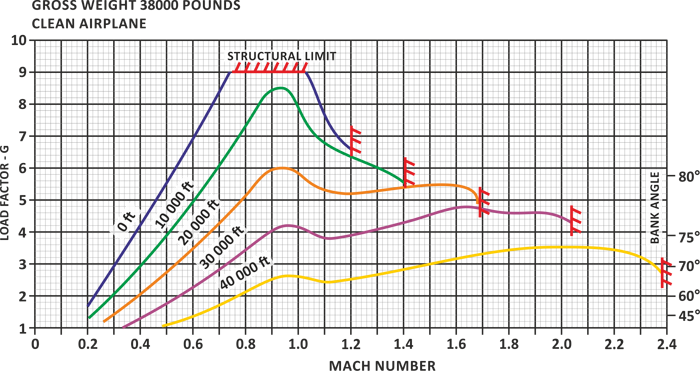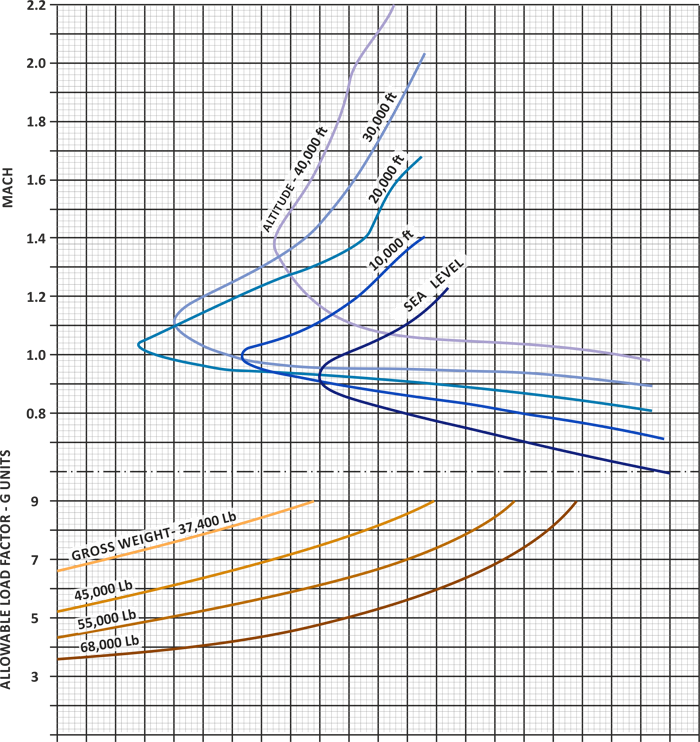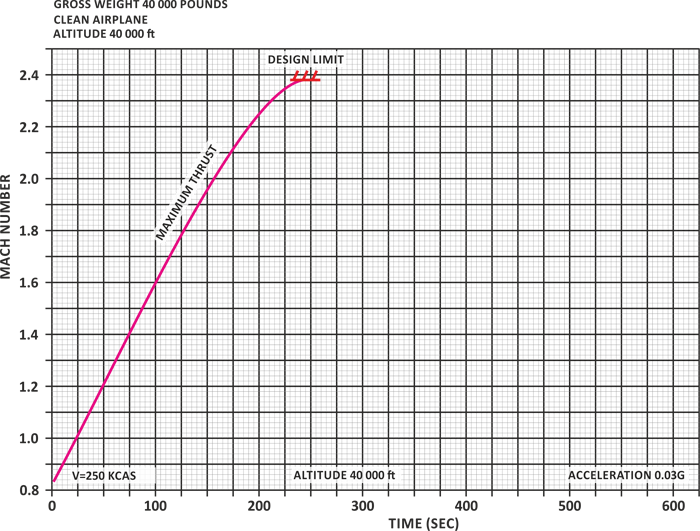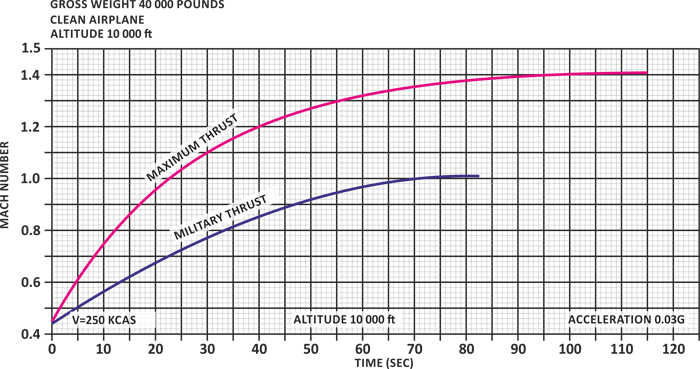The McDonnell Douglas F-15C Eagle is a twin-engine, all-weather air superiority jet fighter that ranks as one of the best combat aircraft of the modern era. The versatile Eagle has been the mainstay of U.S. air defenses for more than three decades.
The aircraft's AN/APG-63(V) pulse-Doppler radar enables it to detect, identify and engage enemy aircraft at long range with AIM-120 AMRAAM or AIM-7 Sparrow missiles. For close range dogfights, the Eagle carries AIM-9 Sidewinder AAMs and an internal 20 mm M61 Vulcan Gatling gun housed in the starboard wing root.
The F-15C has scored more than 100 air-to-air victories in the service of Israel, Saudi Arabia, and the U.S. without suffering any confirmed losses – a combat record that speaks for itself
Low wing loading, high thrust-to-weight ratio and large rudders enable the aircraft to turn tightly without losing too much energy, making it a powerful adversary in the hands of a skilled pilot. Twin Pratt & Whitney F100-PW-220 engines enable the F-15C to climb vertically to 40,000 feet (9,100 m) in less than a minute.
The F-15C first entered service in 1976 and has been widely exported, with 483 built between 1979–1985. King of skies for almost forty years, the DCS F-15C Eagle is one of the most exciting and rewarding DCS aircraft to fly.
The McDonnell Douglas / Boeing F-15C Eagle is a highly maneuverable fourth-generation twin-engine all-weather tactical fighter. It has been the air superiority fighter mainstay of U.S. and NATO forces since the 1970s and will remain as such well into the 21st century.
Air superiority is achieved through high maneuverability at a wide range of airspeeds and altitudes, as well as advanced weapons and avionics.
The weapons and targeting system the F-15C can detect, track, and engage enemy aircraft autonomously. The F-15C can also be directed by ground and airborne controllers at beyond visual range, medium distances, and in close-quarters maneuvering dogfights, over friendly or enemy territory.
Weapons and control systems are configured in a way that enables a single pilot to effectively fight multiple enemy aircraft. The combination of the powerful radar and long range weapons often give the Eagle the first shot / first kill advantage.

The development program for the F-15C was based on an urgent need for a maneuverable latest-generation fighter, and the design was based new technologies as well as time-honored tradition of such famous aircraft as the P-51 Mustang and the F-86 Sabre.
Crew: 1 pilot
Length: 63 ft 9 in (19.43 m)
Wingspan: 42 ft 10 in (13.05 m)
Height: 18 ft 6 in (5.63 m)
Wing area: 608 ft2 (56.5 m2)
Leading edge sweep angle: 45°
Empty weight: 28,000 lb (12,700 kg)
Max. takeoff weight: 68,000 lb (30,845 kg)
Fuel weight in drop tanks: 5370 kg (3x1790 kg)
Fuel capacity: 13,455 lb (6,100 kg) internal

Combat radius: 1,061 nm (1,967 km) for interdiction mission
Ferry range: 3,000 nm (5,550 km) with conformal fuel tanks and three external fuel tanks
Service ceiling: 65,000 ft (20,000 m)
Rate of climb: >50,000 ft/min (254 m/s)
Take-Off Distance: 274 m
Landing Distance: 1067 m
Wing loading: 73.1 lb/ft2 (358 kg/m2)
Thrust/weight: 1.14
Maximum design G-load: 9G
Lift-to-drag ratio: ~10
Max/Min G-Force: +9,0/-3,0
Guns: 1 x 20 mm (0.787 in) M61 Vulcan 6-barreled Gatling cannon, 940 rounds
4 x AIM-7 Sparrow air-to-air missile
4 x AIM-9 Sidewinder air-to-air missile
8 x AIM-120 AMRAAM air-to-air missile
The F-15C is a jet fighter of conventional design featuring an all-metal semi-monocoque fuselage with a large cantilever shoulder-mounted wing, twin fins, and twin turbofan engines mounted side-by-side in the rear fuselage.

Fuselage: metal semi-monocoque structure divided into three sections, forward, center, and aft. The fuselage is made of aluminum and titanium alloys, with titanium mostly used in the inboard sections of the wings and around the engines.
The forward fuselage section houses a pressurized cockpit, nose landing gear housing, and the majority of avionics, including the radar.
The center fuselage section houses fuel tanks, main landing gear, air ducts, and gun ammo stores.
The dorsal-mounted airbrake is located above the center section, with the maximum deviation angle of 45°.
The main load-bearing elements of the aft section are two rigid tail booms that straddle the engines and the arresting hook.
Cockpit: bulging bubble canopy made of polycarbonate with acrylic coating. The bubble canopy provides an unobstructed view outside the aircraft.
The fighter’s pressurized cabin is equipped with air conditioning and liquid oxygen system.
The F-15C is equipped with the McDonnell Douglas ACES II ejection seat, capable of ejecting the pilot in zero-zero conditions and up to the aircraft maximum altitude and airspeeds of up to 1,100 km/h. At zero airspeed, the catapult fires within 0.3 seconds, followed by the rocket sustainer in 0.45 seconds, separation of the pilot from the seat after 1.3 seconds, and opening of the parachute pack in 2.3 seconds.
The Wings are fixed-geometry, 45 degree shoulder-mounted swept wings. The wings are optimized for dogfighting at 550 kts and provide best performance at that airspeed, with decreased performance at other speeds. The wing has a slight one-degree anhedral which reduces stability in the rolling plane. The characteristic raked wingtips are designed to reduce buffeting. The leading edges have a conical camber optimized for higher G-loads.
Structurally, the wing is a multi-celled, three spar structure with multi-stiffened skins. The fighter features conventional outboard ailerons, and conventional flaps (maximum deflection angle of 30°).
Uncharacteristically for a fourth-generation fighter, no spoilers or leading-edge extendible slats are fitted.
Leading and trailing edges are of conventional light alloy rib and skin construction, while the wingtips are of aluminum honeycomb construction.
The twin Vertical Stabilizers consists of two interchangeable fins with rudders mounted on the base, and also mount the RWR and ECM antennae. The outer sections, leading and trailing edges of the vertical stabilizers are aluminum, while the inner section and the rudder are made from boron/epoxy composite material.
The interchangeable Horizontal Stabilators on the F-15 rotate as a whole, providing both flight stability and flight path alteration along the pitch axis. The stabilators can rotate independently from each other, or in unison.
The leading edge of the horizontal stabilator has a sawtooth shape, which eliminates harmful resonance at supersonic speeds.
Similar to the vertical stabilizers, the surfaces are made of aluminum and boron/epoxy composite.
The fighter's retractable tricycle Landing Gear retracts into the fuselage, the legs turning 90 to lie flat in under-fuselage wells.
The undercarriage track is narrow at 2.75 m.
The F-15 is also fitted with a retractable arresting hook for emergency situations when the wheel brakes have failed.
Powerplant. The F-15C is powered by twin Pratt & Whitney F100-PW-220 afterburning turbofans with dry thrust of 14,590 lbf (64.9 kN) each, and thrust with afterburner of 23,770 lbf (105.7 kN) for each.
The F100 has a dual spool axial compressor with 3 fan and 10 compressor stages and inlet variable vanes, 2-stage low and high pressure turbines, a combustion chamber, and an afterburner spray ring.
Engine length F100-PW-220: 5.280 m
Low pressure compressor diameter: 0.928 m
Maximum diameter: 1,181 m
Dry weight: 1,444 kg.
The engine control system (ECS) comprises a primary digital control and a secondary hydro-mechanical control mode used as a back-up.
The Auxiliary Power Unit, or Jet Fuel Starter (JFS), is housed centrally between the two engines, which allows for the twin engines to start on the ground.
Air Inlets work independently of each other and consist of three variable ramps each, a variable diffuser ramp and a variable bypass door to control the airflow. The bypass door is used to relieve excess pressure in the inlet duct. Ramps move by utilizing the F-15's hydraulic power system.
Position and air flow control is provided automatically, based on Mach number, temperature, angle of attack, and other parameters.
The first variable ramp is pivotally suspended and can pivot between 4° up and 10° down. The overall goal of the system is to provide the engines with smooth optimal airflow.
All aircraft systems described herein are based on the actual systems used in the actual F-15C Eagle.
Realism is the main cornerstone of the Advanced Flight Model (AFM) implementation for this aircraft.
The main goal for this F-15C simulation is realism in all aircraft systems, affecting the fighter's flight characteristic, and taking into account all aerodynamic forces and external environmental factors.
Afterburner operation is simulated in detail, with complex afterburner spray ring calculations.
Startup procedure is fully modeled.
Pressing the Engine Start key initiates the automatic startup procedure, faithfully modeled in detail.
The model follows real-world steps needed to start the engine in a real F-15; however the current implementation can only be performed automatically without additional manual input by player.
The JFS (Jet Fuel Starter) pull-out handle starts the JFS. Upon JFS reaching sufficient speed, the READY lamp lights up on the right console. The engine start procedure begins a few seconds later based on selected input (left or right).
Two possibilities can arise after the first engine is started:
The right engine is always started first when starting both engines. This way the hydraulic pump operated by the right engine can be checked.

JFS LOW display illuminates after the JFS is started, showing that one or both hydraulic accumulator are discharged. After starting the engine, the hydraulic pressure in the accumulator rises and the display will turn off.
Other indicator lights may illuminate during start-up, including L GEN OUT, R GEN OUT, or EMER BST ON. This is not a malfunction. However, if the lights remain on after the start-up procedure is completed, a malfunction may indeed have occurred.
The F-15C carries internal fuel in four fuselage and two wing tanks with total capacity of 2,070 gallons (7,836 liters).
The fighter can also carry up to three external fuel tanks, two under wing and one under fuselage, with a total capacity of 610 gallons (2,309 liters).

Maximum overall capacity for all internal and external tanks is 3,800 gallons (14,385 liters). The interconnected fuselage tanks are located behind the cockpit and under the speed brake, between the two engine air intake ducts.
All internal, external and CFT fuel can be dumped via the Fuel Dumping System through fuel vent outlets located at the trailing edge of each wingtip.
Aerial refueling can be accomplished via the Air Force type fixed boom system with an air refueling receptacle.
| Tank | Capacity (gal) | Fuel Weight (lbs) | Fuel Weight (kg) |
|---|---|---|---|
| Tank 1 | 655 | 4257 | 1931 |
| Right Feed | 234 | 1521 | 690 |
| Left Feed | 189 | 1228 | 557 |
| Left/Right Wing Internal | 496 | 3224.5 | 1462.5 |
| 496 | 3224.5 | 1462.5 | |
| TOTAL INTERNAL | 2070 | 13455 | 6103 |
| Left/Right Wing External Drop | 610 | 4072 | 1847 |
| 610 | 4072 | 1847 | |
| TOTAL INTERNAL + EXTERNAL WING DROP | 3290 | 21599 | 9797 |
| Fuselage Drop | 610 | 4072 | 1847 |
| TOTAL INTERNAL + EXTERNAL FUSELAGE DROP | 2680 | 17527 | 7950 |
| TOTAL INTERNAL + EXTERNAL DROP | 3800 | 25671 | 11644 |
| Maximum possible fuel capacity | 3800 | 25671 | 11644 |
Fuel transfer system is fully automatic. Fuel from external fuel tanks are transferred to the internal tanks by regulated engine bleed air pressure.
However, the 1 tank pump will not operate on the F-15C with the aerial refueling receptacle door open (SLIPWAY switch is not in the CLOSE position).
Fuel from external tanks will not feed if the landing gear handle is lowered, or if SLIPWAY switch is in the OPEN position, but only as long as the FUEL LOW light is not illuminated.
Normally, the left engine is powered by the Left engine feed tank, and the right engine by the Right engine feed tank. When flying on one engine, the engine feed tank of the disabled engine will not feed the running engine until the operative engine's feed tank fuel supply dips well below the FUEL LOW limits.
The WING (for external wing tanks) and CTR (for centerline tank) switches are set to NORM for normal transfer and refuel functions when external tanks are used. The switches have no effect when external tanks are not used.
As conformal tanks are not covered in this model, the CONF TANK switch is set to STOP TRANS to maintain logical fuel flow.
The EXT TRANS switch is set to WING / CTR.
Combined indicator that displays different fuel quantities is located at the bottom right of the Main Instrument Panel.

The pointer shows the total internal fuel in thousands of lbs (readings must be multiplied by 1,000). The counter marked as "TOTAL LBS" indicates total internal, external, plus CFT fuel.
The two lower counters marked LEFT and RIGHT provide individual tank monitoring possibility. The tank to be monitored must be selected by a selector knob and the current fuel levels of the selected tank are indicated by the two counters.
The Selector knob is set to the "FEED" positions to display fuel state for engine feed tanks.
The LEFT and RIGHT lower counters therefore display total fuel in the left and right engine feed tanks.
The FUEL LOW caution automatically displays, and the appropriate caution light illuminates, if fuel level in one of the engine feed tanks decrease below a minimal limit.
Individual fuel level sensors in the engine feed tanks are set to 1,000 pounds for the right engine feed tank, and 600 pounds for the left.
In a real F-15, the pilot can manually set bingo fuel level by a knob in the upper right corner of the Fuel Quantity Indicator display. Once this level is reached by the fuel quantity pointer, a BINGO FUEL caution on the MPD/ MPCD display comes on.
In the case of this simulation, BINGO fuel level is set to 3,500 lbs.
All internal, external and CFT fuel, except for fuel in engine feed tanks, can be dumped overboard.
With the landing gear handle lowered, fuel in external tanks is not dumped.
The dump switch is spring-loaded to the lever-locked NORM position. If the switch is placed into its DUMP position, it is held there electrically.
The fuel is dumped at an approximate rate of 390 PPM (pounds per minute) for the right wing tank and 260 PPM for the left wing tank and tank 1.

Note:
Unequal dumping rate for the left and right wing tanks creates an imbalance of approximately 130 pounds per minute. This imbalance continues to grow until all fuel is dumped from both wing tanks.
Fuel from the external wing tanks is pumped into internal tanks and then dumped.
Fuel dumping continues:To maintain optimal center of gravity, the sensor in tank 1 prevents additional fuel from reaching external tanks until fuel level in tank 1 reaches at least 1,560 pounds.
Putting the SLIPWAY switch into the OPEN position shuts off tank 1 transfer pump, opens the slipway door, and depressurizes external fuel tanks (if there is no FUEL LOW condition).
If the switch is left in OPEN position on the F-15C, the fighter may develop unstable forward center of gravity.
Control surfaces consist of traditional ailerons, rudders and two stabilizers which can move symmetrically or differentially. Control surfaces are driven by hydraulic actuators. Actuators receive control signals from hydro-mechanical and electrical systems, as well as the Control Augmentation System or CAS.
The CAS is essentially a hydro-mechanical system that transfers pilot and autopilot input to control surfaces. It uses 3 basic flight controls: control stick for pitch and roll control, two rudder pedals for yaw control, and the throttle for thrust control.
The system deflects control surfaces according to roll, pitch and yaw angular velocity, G forces, and angle of attack.
The main purpose of this system is to increase control input accuracy amd to improve control surface response.
CAS does not respond to sheer stick and pedal movement, but rather to the force applied to them. Therefore the aircraft remains flyable even in case of a mechanical malfunction. The plane can be controlled by using only the mechanical control system, or purely by Control Augmentation System's sensors on the control stick.
CAS control of the roll axis is connected to the differential stabilizer. Maximum manual deflection of the ailerons is adjusted depending on airflow, dynamic pressure, altitude, as well as control stick position.
CAS receives a pitch channel signal from the flight control stick, which is then converted into an electrical signal transmitted to the stabilizer, deflecting it by up to +/-10° at around 3,75 lb of force for each G. As soon as the plane begins to react and G forces begin to increase, the Pitch CAS Channel monitors compares actual G value with the target value and uses the hydro-mechanical control system to dampen excessive G forces.
At angles of attack of over 20°, Pitch CAS Channel does not deflect the stabilizer at all. Only the damper is then utilized, which helps avoid stalls. Pitch control at high angles of attack is therefore slightly less precise.
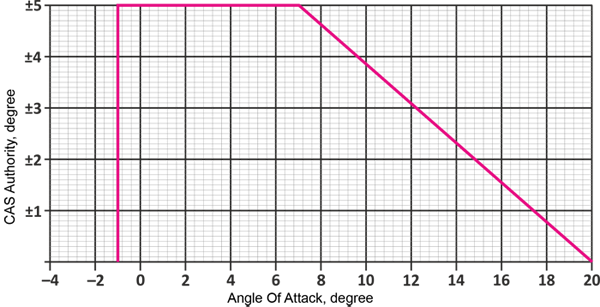

Roll CAS channel receives flight control stick input and converts into an electrical signal that is transmitted to the stabilizer. The Roll CAS Channel in conjunction with the hydro-mechanical system allows the pilot to maintain high roll rate in a wide range of flight conditions while dampening any oscillations that may arise. Stabilizer deflection angle varies based on indicated airspeed and angle of attack.
Yaw CAS Channel essentially acts as a damper along the yaw axis, while pilot input with rudder pedals further deflects the rudder to +/-15° when needed in cases such as asymmetric weight distribution or engine or flap failure.
Unlike the Aileron Rudder Interconnect (ARI), the yaw CAS Channel continues to work at supersonic speeds, preventing unwanted slip as the aircraft rolls.
Enabling the ATT HOLD mode on the control panel (Press the [A] key on your keyboard to put the switch in the ON position), tells the autopilot to hold the current attitude in the following range: +/-45° of pitch, and +/-60° of roll.
The mode will turn off automatically if one of the following events occur:
Enabling the ALT HOLD mode on the control panel (Press the [H] key on your keyboard to put the switch in the ON position), tells the autopilot to note the current barometric altitude and continue to maintain it.
Reaching more than +/-60° of roll will disable the ALT HOLD mode; however the ALT HOLD switch remains in the ON position.
The mode will automatically turn off when vertical velocity exceeds 2,000 feet per minute.
The F-15 features a takeoff position control trim feature. When the T/O Trim button is pressed on the CAS panel, the flight control stick and pedals move to the preset take-off position. The T/O TRIM indicator will illuminate.
Flight control stick take-off position means a slight deviation to pitch.
When the button is depressed, the indicator light will turn off.
The F-15's hydro-mechanical control system uses mechanical and hydraulic actuators to deflect control surfaces.
This device regulates force transferred from the flight control stick to actual stabilizer deviation. The main goal of the system is to provide the same G force for stick travel throughout the flight envelope.
The Pitch Ratio algorithm is based on Mach number and altitude, and is generally very reliable at all altitudes and airspeeds.
However, some excessive amount of G may be felt during rapid deceleration. There may also be increased sensitivity in low altitude / high airspeed conditions, and decreased sensitivity at very low airspeeds.
The Pitch Ratio reaches its maximum at low speeds at all altitudes, and minimum at high speeds and low and medium altitudes.
This device regulates force transferred from the flight control stick to both differentially stabilizer and ailerons. The devices provides higher roll rates at lower airspeeds, and limits roll rate at high speed, preventing damage to the airframe.
This device is designed to prevent excessive yaw when the aircraft rolls. It creates a mechanical connection between the ailerons and the rudders.
It is worth noting that F-15's rudders have a rather large surface area. They are exposed to significant force during lateral movement, such as when rolling the aircraft, and the force will often work to create noticeable yaw. In some cases the airframe may even create an opposite reaction to moving the control stick in the roll axis.
The ARI algorithm is simple. For positive angles of attack (pulling the flight control stick) and moving the stick to the right, the rudder is also deflected to the right, working to minimize yaw. For negative angles of attack (pushing the stick) when moving the stick to the right, the rudder is deflected to the left, preventing backlash roll.
With more stick deflection (up or down) at lower speeds and greater positive or negative angles of attack, the more deflection is applied to the rudder, reaching its maximum when the flight control stick is pushed to the mechanical limit.
The rudder has several full deflection positions that depend on airspeed, and the rudder pedal and control stick input.
+/- 15 degrees when below 1.5M by pedals
+/- 5 degrees when above 1.5M by pedals
+/- 30 degrees, ARI output when flight control stick is fully deflected to maximum position both down (towards the pilot) and fully left or right.
The ARI is disabled at speeds about Mach 1.
The PTC system is designed to ease pilot workload by maintaining steady pitch in changing flight conditions, such as during changes in airspeed due to increase or decrease in engine RPM, opening the air brake or flaps, using weapons, or jettisoning external stores.
The system's G force sensor responds to changes in G, while the system's force sensor responds to force applied to the control stick. If the stick remains static due to being trimmed in the neutral position, or held static by pilot, the PTC automatically deflects the stabilator to compensate for change in G.
For example: let's consider an F-15 in horizontal flight experiencing steady 1G. Dropping flap or moving the throttle will upset aircraft trim, therefore disrupting the G load. The PTC will sense the change in flight conditions and compensate by moving the stabilator, returning the aircraft to level 1G flight.
The PTC is disabled whenever the landing gear is down. This ensures that the pilot feels the change in the aircraft balance during landing. The pilot can then properly sense the change in aircraft attitude based on airspeed and control input, which is negated when using PTC. However, when performing any other in-flight maneuvers, the system creates a more comfortable piloting environment by adjusting aircraft attitude as conditions change.
F-15's trim controls consist of two parts: manual and automatic. Pilot controls manual trim via the corresponding controls on the flight stick.
